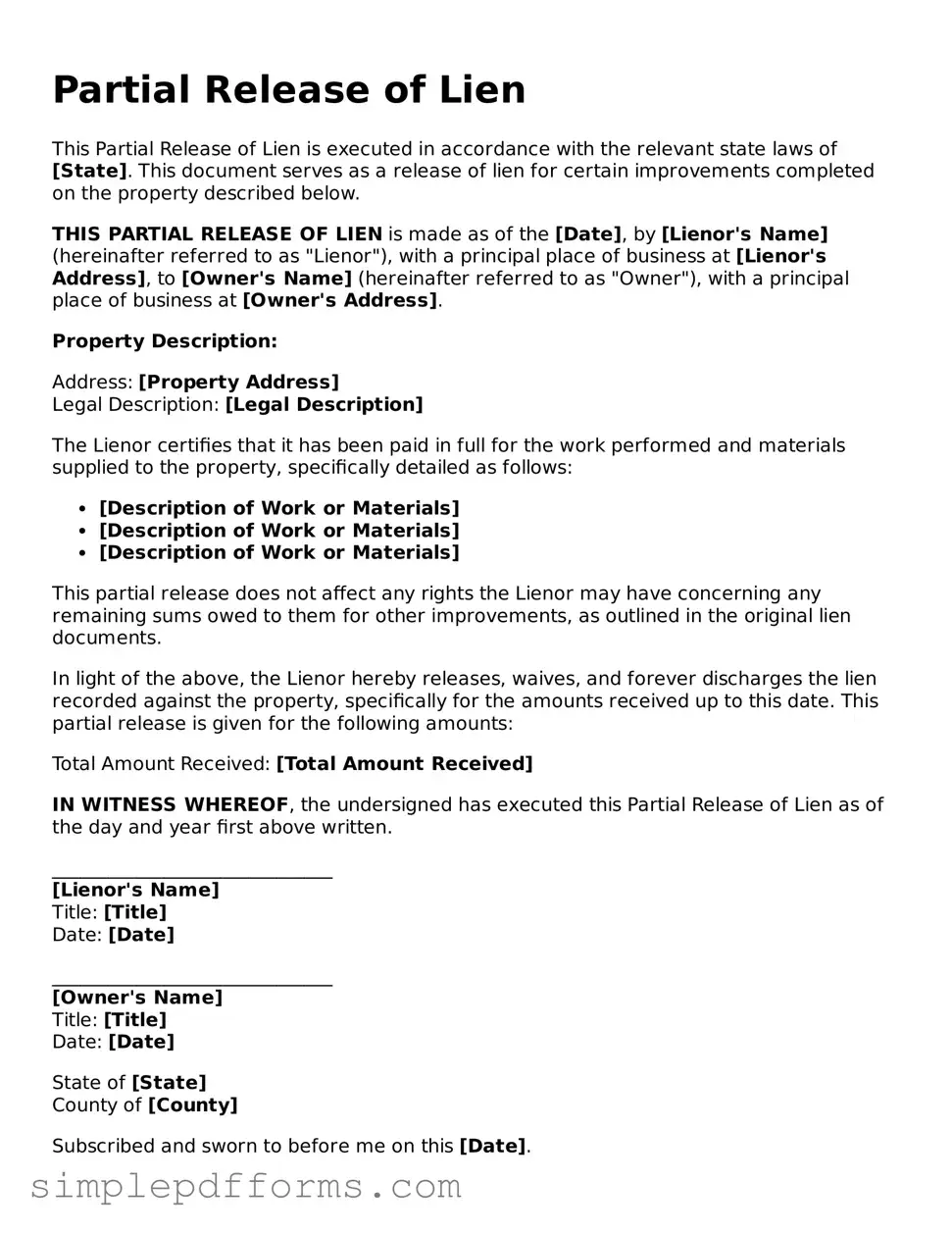Partial Release of Lien
This Partial Release of Lien is executed in accordance with the relevant state laws of [State]. This document serves as a release of lien for certain improvements completed on the property described below.
THIS PARTIAL RELEASE OF LIEN is made as of the [Date], by [Lienor's Name] (hereinafter referred to as "Lienor"), with a principal place of business at [Lienor's Address], to [Owner's Name] (hereinafter referred to as "Owner"), with a principal place of business at [Owner's Address].
Property Description:
Address: [Property Address]
Legal Description: [Legal Description]
The Lienor certifies that it has been paid in full for the work performed and materials supplied to the property, specifically detailed as follows:
- [Description of Work or Materials]
- [Description of Work or Materials]
- [Description of Work or Materials]
This partial release does not affect any rights the Lienor may have concerning any remaining sums owed to them for other improvements, as outlined in the original lien documents.
In light of the above, the Lienor hereby releases, waives, and forever discharges the lien recorded against the property, specifically for the amounts received up to this date. This partial release is given for the following amounts:
Total Amount Received: [Total Amount Received]
IN WITNESS WHEREOF, the undersigned has executed this Partial Release of Lien as of the day and year first above written.
______________________________
[Lienor's Name]
Title: [Title]
Date: [Date]
______________________________
[Owner's Name]
Title: [Title]
Date: [Date]
State of [State]
County of [County]
Subscribed and sworn to before me on this [Date].
______________________________
Notary Public
My Commission Expires: [Expiration Date]
